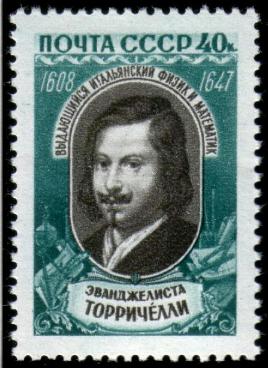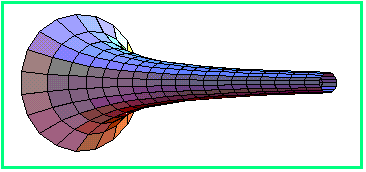 deutsche Version
deutsche Version| Manfred Börgens Mathematics on stamps |
stamp list previous stamp next stamp |
main page |
 deutsche Version deutsche Version |
 |
Soviet Union 1959 Scott 2165 |
Evangelista Torricelli (1608 - 1647)
Torricelli's name stands in Russian below his portrait; avove his head we read "Eminent Italian physicist and mathematician".
Evangelista Torricelli is well known as a physicist whose research of atmospheric pressure led to the invention of the barometer. He also pioneered in the fields of hydraulics and vacuum, and as an experienced cutter of lenses, he played an important role in the improvement of telescopes and microscopes. It is less known that Torricelli was an outstanding mathematician of his time, a contemporary of Galilei, Descartes, Cavalieri, Fermat and Pascal.
Most portraits from the 17th century show old men. On the stamp Torricelli is portrayed as a young man - this is because he died at the age of 39. He was Galileo Galilei's student and secretary. The last five years of his life he spent as court mathematician of the Grand Duke of Tuscany, succeeding Galilei in this position. During this time, he published his book Opera geometrica.
In the first half of the 17th century, infinitesimal calculus was short before its breakthrough. Torricelli was one of the pioneers who prepared Newton's and Leibniz's great works some decades later.
Torricelli amazed the scientific circles of his time with a calculation today known as improper integral. He proved that the solid generated by the rotation of the hyperbola y = 1/x about the x-axis for x > 1 has finite volume π .

But this solid of rotation is infinitely long and has an infinitely large surface. This seemed to be a paradox to many of Torricelli's contemporaries and gave rise to doubts about the sensibility of such mathematical concepts.